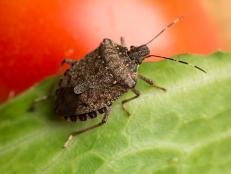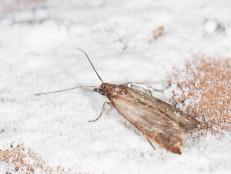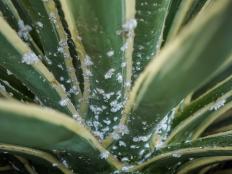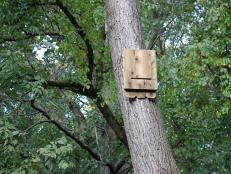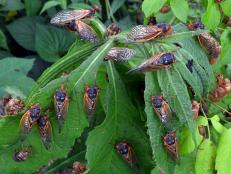What Do Ladybugs Eat?

Image courtesy of Mick Telkamp

Lady Beetles ("ladybugs" to their friends) are small insects with over 5,000 known species. Best known is the seven-spot ladybug, the shiny red bug with black spots on its back beloved by many. Kids like them because they’re cute, but gardeners appreciate this iconic garden visitor for another reason. While most are omnivores and may snack on a bit of plant matter here and there, salad is not the main dish for these seemingly gentle creatures. Other bugs are. Turns out, ladybugs are stone cold killers, and we couldn’t be happier.
There are a few species of lady beetles that are indisputably considered garden pests. The Mexican bean beetle, for example, destructively devours leaves, flowers and developing bean pods in the garden. Most though, including the iconic seven-spot, are are welcome guests for home growers, often referred to as "the gardener’s best friend." Considered beneficial bugs, these friendly looking beetles are voracious predators, consuming pesky garden pests by the thousands.
Although ladybugs are tiny, ranging from just 1 to 10 mm, tinier still are their prey. Aphids may be small, but in large numbers they are prodigious plant eaters, sucking the sap from the leaves and often destroying crops before effective treatments can be employed. Fortunately, in a garden with a healthy ladybug presence, when it comes to aphids and other small plant killers like whiteflies, mites, cabbage moths and mealybugs, pesticides may become unnecessary. The extermination of these pests is the lifelong goal of the ladybug.
Beneficial Insects Are Bugs We Love 8 Photos
See which garden helpers join ladybugs on our list of best beneficial bugs in the garden.
How to Keep Ladybugs Out of the House
We like ladybugs in our gardens ... but maybe not in our homes
Ladybugs live an average of 3 to 6 weeks, but they pack a lot of living (and a lot of eating) into those few weeks. One ladybug will lay up to a thousand eggs in those weeks. Eggs are laid on the underside of leaves to protect them from predators, but it also happens to be a popular hangout for aphids and other sap-sucking insects. From the moment a ladybug larvae emerges, it will begin consuming aphids or mites at an astonishing rate. By the time its short life comes to an end, the average ladybug may have eaten as many as 5,000 aphids.
The insatiable appetite of ladybugs make them a very beneficial bug indeed. If your garden is suffering the impact of an aphid or whitefly infestation, it may be time to throw a ladybug picnic. Ladybugs are available commercially and may be introduced to your garden through purchase, but this practice has come under scrutiny because harvested ladybugs sold by some providers may carry other parasites. To attract ladybugs naturally, consider planting flowers around the garden. Ladybugs are attracted to pollen and the increased availability can draw them in. Another strategy for increasing a ladybug presence is the elimination of pesticides. This can be challenging when already dealing with a pest problem, but once a ladybug population is established they will be happy to do your dirty work without chemical intervention.








